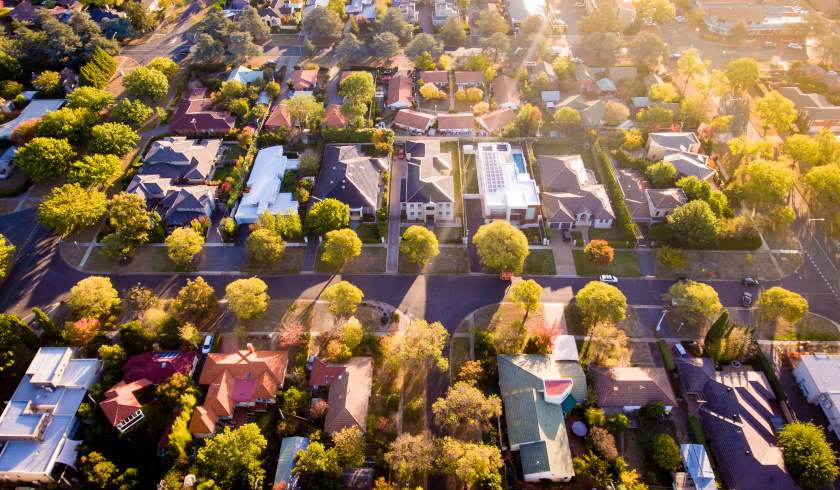Investors vital to housing challenge as affordability hits six-year high
Housing affordability has seen a rapid improvement over the March quarter, with one association labelling it the fastest improvement since 2013.

According to the Housing Industry Association (HIA), the HIA Affordability Index rose by 2.2 per cent over the March 2019 quarter, which Tim Reardon, chief economist of the HIA, called “the most significant improvement” in housing affordability since September 2013.
“The improvement in housing affordability has been experienced across the country, with the exception only of Tasmania and the ACT, where ongoing house price growth has seen affordability remain static,” Mr Reardon said.
Of those that improved, Sydney saw the greatest improvement, with the index rising 12.4 per cent, followed by Melbourne at 9.6 per cent, Perth at 7.7 per cent, Darwin at 5.9 per cent and Brisbane at 2.5 per cent.
“The improvement in affordability is most significant in east coast capital cities,” Mr Reardon said.
“Affordability in Sydney deteriorated to an extent that in June 2017 it required two average Sydney incomes to be able to afford repayments on an average Sydney home. In just over a year, this has improved to only requiring 1.8 standard incomes to purchase the same home.
“Similarly, in Melbourne, the Affordability Index has improved by almost 10 per cent in a year.”
The improvement in housing affordability, according to Mr Readon, was due to the boom in house building over the last five years, as well as wage growth.
“With completions of new homes remaining at elevated levels, affordability is poised to continue to improve,” he said.
How do we need to address housing affordability?
With the statistics showing that housing affordability is improving, property experts believe that property investors play an important role in the affordability discussion.
Jeremy McLeod, the managing director of Nightingale Housing, director of Breathe Architecture and one of the panellists at the briefing of the Alternative Housing Ideas Challenge, said that all parties involved in the housing sector have a say in the affordability debate.
“Landlords, like anyone, get to decide what it is they want out of their investment,” Mr McLeod said.
The questions investors could be asking in this debate, according to Mr McLeod, include:
- Do investors just want to maximise their return or could there be a new class of Australian landlord that acts like an impact investor chasing a triple bottom line outcome from their investment?
- Could their returns contribute towards a sustainable, community-focused property that returns a fair and reasonable return over time?
- Could this investment be a better long-term, quality investment?
- Would tenants stay for longer and be more stable?
Peter Koulizos, chairman of the Property Investment Professionals of Australia, agreed with Mr McLeod’s sentiments on the basis that property investors provide rental accommodation and because public housing is not as significant in the property sector compared to private rental accommodation.
“They certainly do make a profit, but because they are the biggest supplier of rental housing in Australia, they should have a seat at the table when discussing this, as should people from federal government, state government, the local government, tenant associations, community housing, social housing, affordable housing, all of these players need to be at the table,” Mr Koulizos said.
In the PIPA chairman’s view, the housing affordability discussion should be more focused on property attainment.
“When I research and look at housing affordability, I look at what proportion of people’s income is spent on the mortgage, and because interest rates are so low at the moment, and forecast to go even lower, housing affordability at the moment is not as bad as it has been in the recent past, but it’s also not as good as it has been in the recent past,” he said.
“Once people can get the house, it’s not a huge issue to pay off the mortgage, again because interest rates are so low. What the problem is, is being able to attain the house, or in other words, being able to come up with the deposit to buy the house in the first place. That’s the issue.
“If we can assist first home buyers with housing attainability, then we are well on the way to helping them with housing affordability.”
Mr Koulizos has previously mentioned ways the government can address housing affordability, which includes including established properties in the First Home Owner Grant, restricting the First Home Owner Grant based on income, increasing the First Home Owner Grant, giving first home buyers interest-free loans and establishing shared equity schemes.
Another idea he suggested was to look abroad to more established property markets.
“There is no doubt that housing will become more expensive as time goes on, because we only need to look at more mature property markets, say like Europe, where they have been trading in property for over a thousand years,” Mr Koulizos said.
“What we need is to learn from some initiatives from overseas and implement some of them in Australia so we can keep that great Australian dream alive.”
However, if well-rounded discussion is to be generated on addressing housing affordability, Mr Koulizos also suggested a housing summit, which involves bringing all the relevant parties to the table
“People that attend that summit need to go not just with their own point of view, but need to go with an open mind, so that there can be some definitive solutions to these issues that can be actioned, rather than one group go with their point of view, another group with their point of view, which might be opposing point of views, and it’s just a waste of time,” he concluded.
